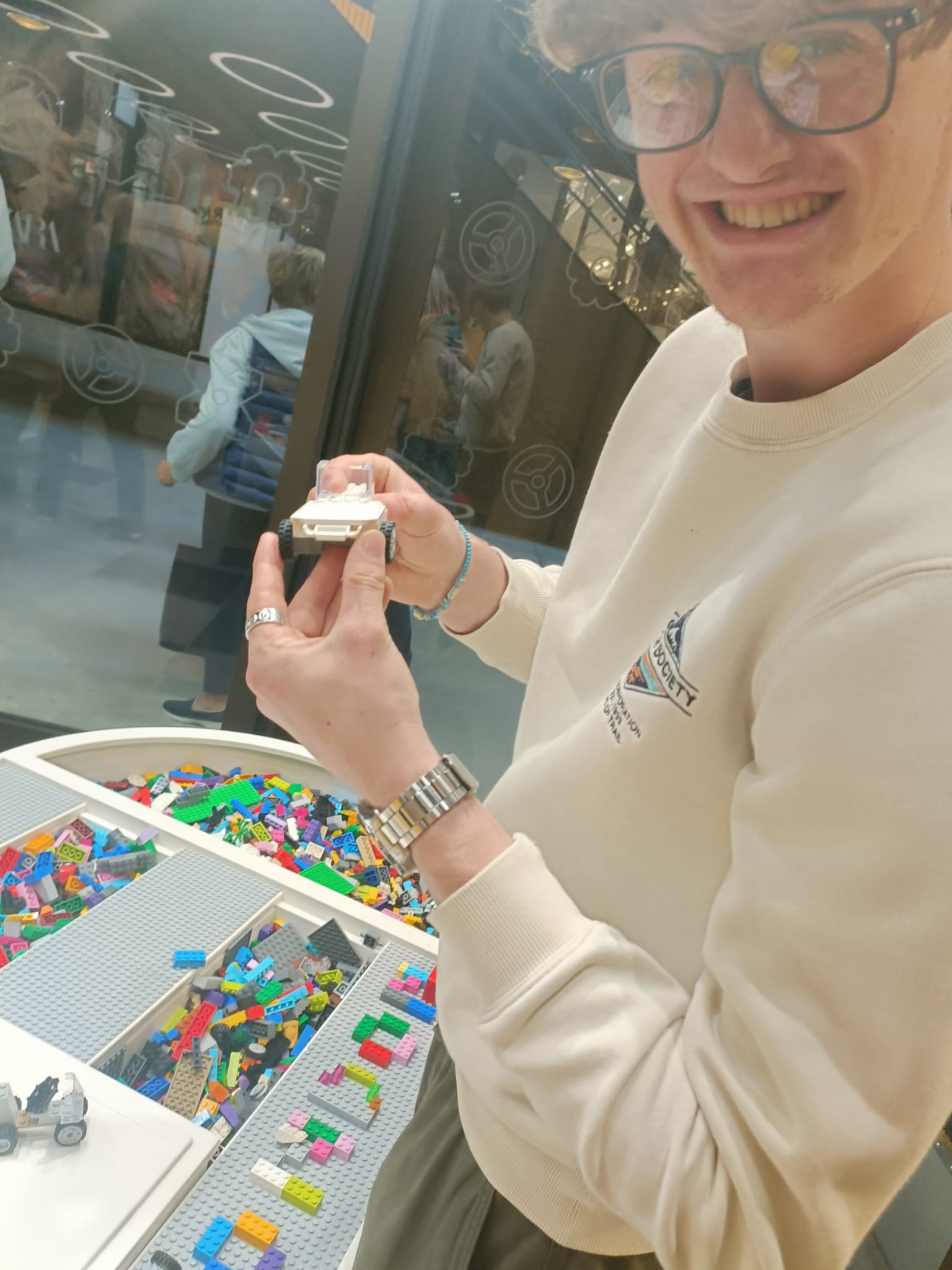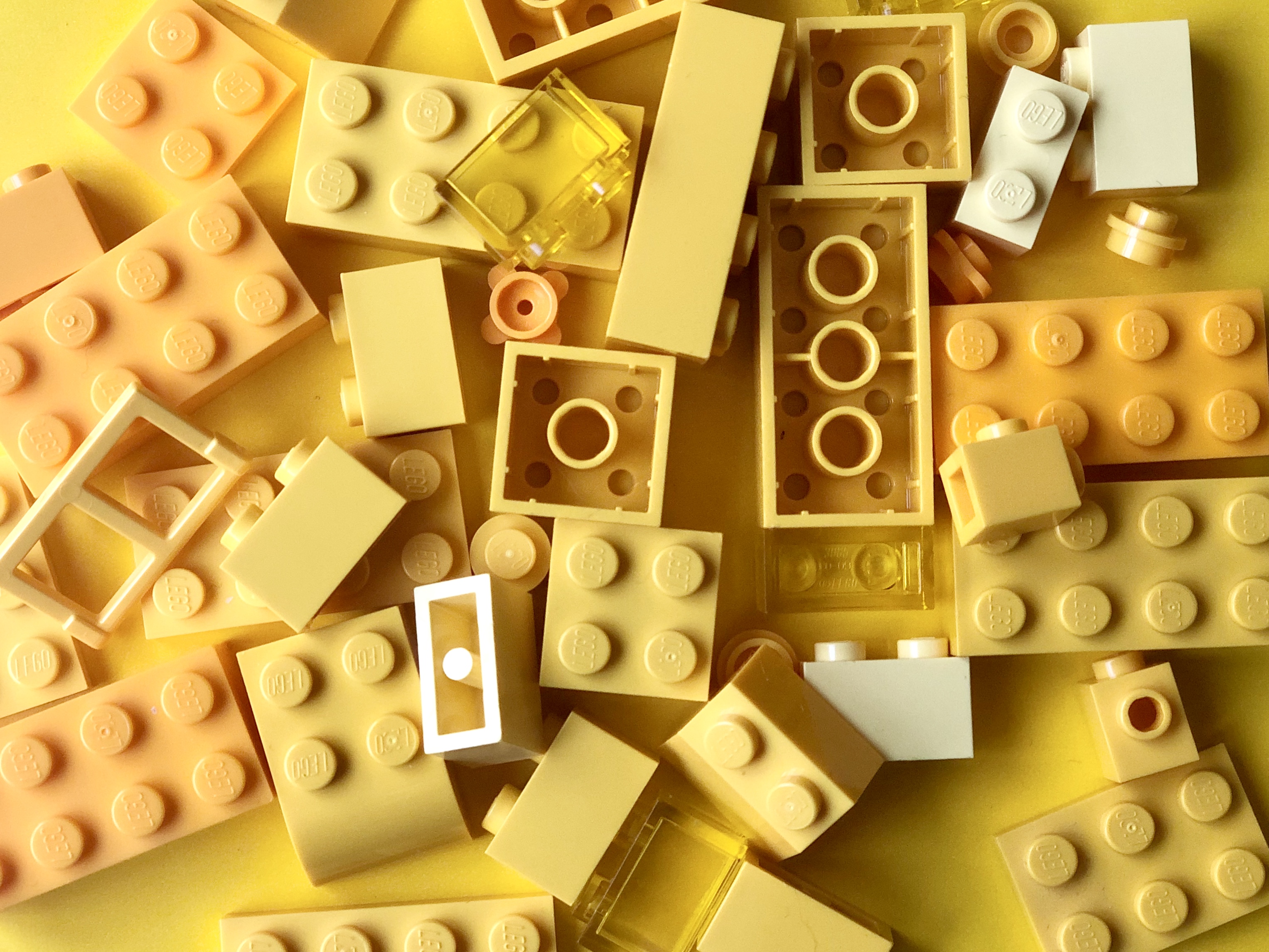LEGO’S FOR KIDS?

Through the cool white window we saw throngs of people plucking pieces from
trays scattered throughout the store. We turned to each other with a cheeky smile and knew we had to go in, just for a quick look. We dumped our bags down and started picking through bricks; nothing much in mind, just a quick stop off. About 50 minutes later we had our creation: a jet powered propellor car complete with flames, stars for headlights and a funky looking driver. We laughed throughout, squealing with glee when we found an interesting new piece only to catch ourselves and ridicule each other for behaving like such children.
But were we really? Is LEGO just for kids?
I had quite the itinerary on my recent stay in London. The material matters exhibition; a behind the scenes tour of the SharkNinja offices and an express pass to the off limits Battersea power station control room were all on the cards. However, as me and my friend Ruaridh made to leave the power station, we forgot about all these brilliant events. An even more important and influential location had appeared;
the heavenly white gates of the LEGO store.
Below - Ruaridh looking particularly pleased with himself

These small plastic pieces had not only managed to draw us in, but had held our attention and inspired new ideas within us. The pure process of creating without barriers had stimulated us to come up with new exciting possibilities, ones that we hadn't considered before entering the store. This is what Lego does, it both inspires and facilitates creation.
These injection moulded bricks were undoubtedly my favourite toy growing up.
Their system is one of the best examples out there of modular design with over 3700 unique bricks all functioning together in the current lineup, all still compatible with the same tolerances and friction fits as the originals from 1958. And this is why it's so easy to pick up LEGO and just start building. By creating a system that is so accessible to begin using but with such a large scope for development and creativity, your ideas are forced to develop as you build. The company's mission statement is ‘to inspire and develop the builders of tomorrow’ and I think there’s a whole generation of
engineers and creators that can substantiate their success.
The whole concept of design for play is something I find really interesting.
I remember talking to a friend working on a project based on empowering kids to guide the direction of their own play with large modular toys. The philosophy of this is that the best toys are the simple ones; base building blocks that allow play to be imaginative and self directed, to exponentially grow from a simple initial idea.
Despite this, there's a real issue with children's play parks trying too hard to prescribe the way children should play. Some of this is obviously due to modern health and safety regulations but a lot of it is still down to negligent design. Children don't enjoy or benefit from obstacle courses or equipment that can only be used in a set way. They need sprawling climbing frames, things they can move about on and create their own narratives around. Some of my favourite times as a child were playing in the forest, building dens and creating our own fun, and this is so much more valuable. I don't believe that the method of play should ever be prescribed, it should always allow for imagination and development. Most importantly, when the latter is the case, play shouldn't just be for children. To play is to develop an idea, and this active development is not only a form of entertainment but a tool.


So this is why me and Ruaridh were so easily able to turn 5 minutes into 50. Why I was able to spend so long building my own worlds as a child and why I still watch YouTube channels build inventions out of small pieces of plastic. When items are well designed for play, that play isn’t limited by age. The design of the object should be a gateway to your own experiences and ideas; with LEGO, anyone can pick up and start building.
I’m beginning to sound like one of my favourite Icelandic artists the way I'm talking about the user’s personal experience. Who knows, maybe I should write a blog post about this philosophy...
I’m beginning to sound like one of my favourite Icelandic artists the way I'm talking about the user’s personal experience. Who knows, maybe I should write a blog post about this philosophy...
.....
COMMENTS:
To leave a comment, email your comment to jakabon@outlook.com with the title
of the post you wish to comment under as the email subject
Example Commenter
Example content of comment
5th Jan
